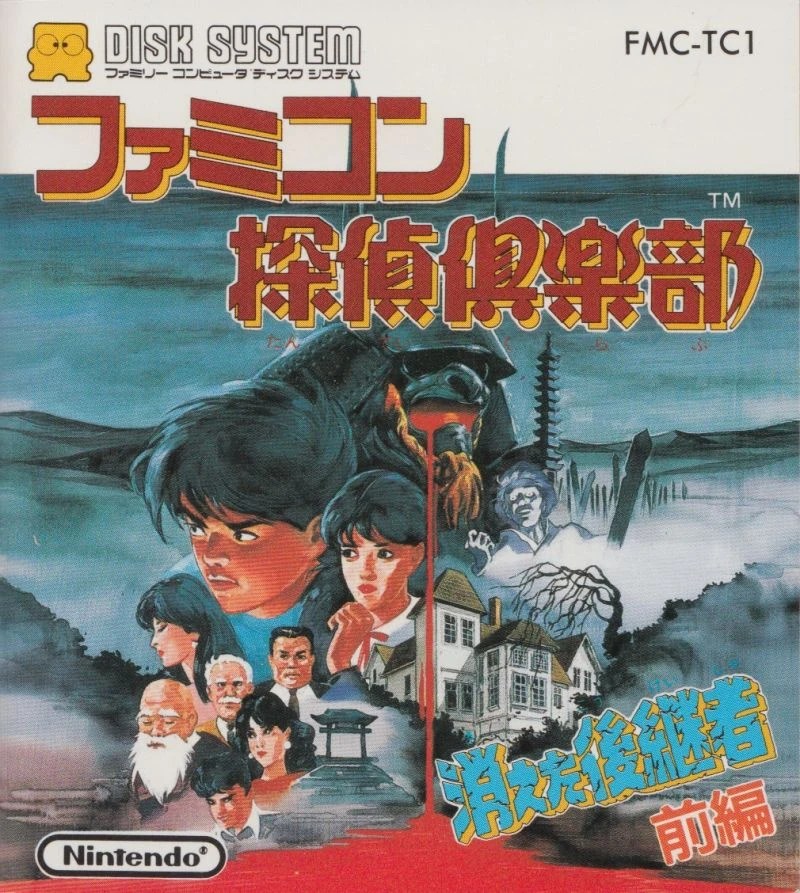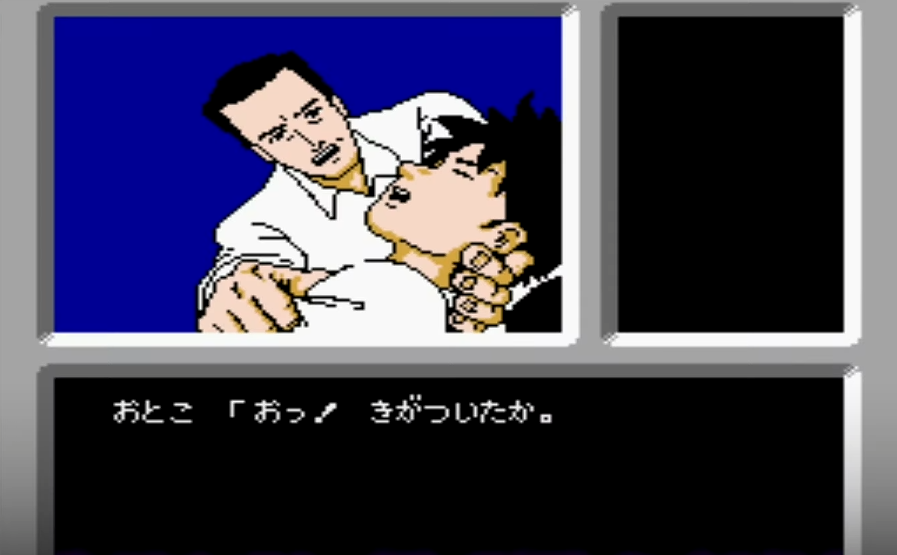A week after Nintendo nearly broke the Internet with a very cryptic and unnaturaly creepy video of a smiling man wearing a bag over his head, the company has finally revealed what the Emio viral campaign was all about. Turns out Emio is the star of a new game in a series dating back to the Family Computer (Famicom) Disk System days that is about to make a spooky return.
Via a video that can only be accessed directly on YouTube, Yoshio Sakamoto, the man who’s been behind the series this whole time, reveals that Emio is the star of Emio – The Smiling Man: Famicom Detective Club.
What is Famicom Detective Club?
It’s this club:

It’s also the name of an adventure game series that has long been on hiatus. So far, it’s composed of only two entries: The Missing Heir and The Girl Who Stands Behind. They came out in 1988 and 1989, respectively, and were both designed and directed by Sakamoto.
The Missing Heir is about the investigation of a mysterious death in the Ayashiro Dynasty, whereas The Girl Who Stands Behind is a prequel that follows the investigation of a creepier folklore tale seemingly more akin to what Emio is teasing.

These are adventure games in the visual novel style where we play as a young detective who roams the Japanese countryside and solves mysteries by interrogating people and examining objects. Though its gameplay was similar to that seen in many visual novel titles of the time, this series was ground-breaking for its themes of murder and drug abuse.
The original games never saw the light of day outside of Japan, but you can play remakes of the two original Detective Club series on the Nintendo Switch. I’ve never played either game, but it seems like there are those, like Destructoid’s own CJ, who likes their stories and finds the remakes engaging enough for you to get nowadays. There are also detractors, who claim that the original games haven’t aged well for modern audiences, and that the great-looking remakes still suffer from the same gameplay problems plaguing the original games.

Detective Club: Origins
Producer Yoshio Sakamoto joined Nintendo as a designer, working on games like Metroid and Kid Icarus before his start with the Detective Club series ’88. His main inspiration was a 1983 Enix game for the NEC PC-6001, The Portopia Serial Murder Case, which Sakamoto claims had a mind blowing effect on him. (Square Enix would later re-release Portopia using AI chat-bot technology, which did not go over well.) He’d previously thought games had to be all about action, not something such as procedural investigation.
In a 2000 interview translated by Shmuplations, Sakamoto tried to have Detective Club not emulate mystery novels, but something that would work effectively as a game.
“In the context of a game, I think a complex and detailed plot demands too much of the player, so I wrote a scenario tailored specifically to the format that, when viewed objectively, might seem a little half-baked, but is more concerned with having the player enjoy the flow of the plot,” said Sakamoto.
Nintendo is a company known for holding on to its employees, so it’s not particularly surprising that Sakamoto has been there for so long. But what has he been up to since the release of the last Detective Club game in ’89? Well, it turns out that though he’s not the most famous names in Nintendo’s roster, he’s still one of its most prolific developers.
During the Detective Club hiatus, Sakamoto would continue to work on some notable Nintendo series, like Wario and Metroid. He wound up directing classics such as Super Metroid, Metroid Fusion, and also produced Metroid Dread. Do you like all the cool new mechanics introduced in Metroid Fusion? Well, according to another interview translated by Shmuplations, those came about because the team wanted Samus to sport a new look. Sakamoto tried to get them to think about new gameplay elements, and the in-game reason for them.
“The very first thing I needed them to understand was what kind of game Metroid is. I told them they were like a lowly enka singer who had suddenly struck it rich… but I don’t think they understood that. [Laughs] My goal, of course, was to impress upon them how important it is that the team that makes Metroid really understand what Metroid is all about.”
Yoshio Sakamoto, via Shmuplations
While Sakamoto didn’t create the Metroid series, he’s arguably one of the most powerful creative forces in the history of 2D Metroid games. Then in the year 2000, Sakamoto even created and directed Card Hero, a Game Boy Color title inspired by Pokémon and Magic: The Gathering that ended up getting a physical release as short-lived trading card game. He’s since worked on a variety of Nintendo games, including Rhythm Heaven, Tomodachi Life, and Metroid: Samus Returns.
My bet is that Nintendo didn’t didn’t greenlight a new Detective Club from Sakamoto solely due to the popularity of this series. I fully believe that Sakamoto and his team have spent a lot of time working out how to update the series for modern players in a memorable way. Remember Samus’ suit: this is not the kind of person to make games without good reason.
Let’s see how the Detective Club series has evolved after so long in dormancy once Emio releases on the Switch on August 29.













Published: Jul 17, 2024 8:11 PM UTC